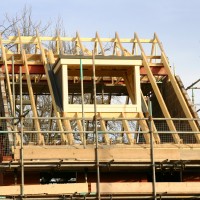
The study, released as part of New Homes Week, suggests that costs like buying and fitting a new kitchen or having a house rewired means that older properties may not be as attractive as they look. It also noted that while 95% of homes built last year enjoyed energy efficiency ratings of between A and C, just a quarter of second hand homes achieve those ratings.
Stewart Baseley, executive chairman of the Home Builders Federation, said: “This report helps to highlight the hidden savings that buyers of new build homes make. While most people have a budget put aside to get the little jobs done, costs soon add up when you need to replace a bathroom or a kitchen.
“£50,000 is a lot of money by anyone’s standards, and this new research emphasises just how much new build home buyers really get for their money.”
Not all new-build homes hit such high standards though. Earlier this year Bovis Homes was forced to pay compensation to home buyers who had been offered cash incentives in order to complete on homes that were not actually finished. It has since admitted that it will be scaling back its completions this year in order to focus on improving standards.
Rachel Geddes, business principal at Mortgage Advice Bureau in London, which works with a large number of new-build developers in central London, said that her firm had seen a buoyant start to 2017, with the signs that this heightened level of business will continue for the rest of the year.
She added: “In response we are seeing a number of lenders becoming more flexible to accommodate the increase in demand and a renewed interest from lenders looking to get back into new-build lending. The increase in volume does seem to have caught a few lenders by surprise, as we have seen timescales increase from two to four weeks in some cases; however I’m sure this will prove to be a minor bottleneck rather than a long-term issue.”
David Sheppard, managing director of Perception Finance, warned that when it comes to buy to let, some lenders adopt a flawed approach on new-build properties. He cited the example of a client who was buying a new-build property in Stratford, but the lender was basing its rental assessments on older buildings and in less favourable areas nearby, and argued that lenders need to find a new way to make this assessments.
He continued: “I do feel that lenders should be looking at their maximum loan-to-values (LTV) on new-build flats as the industry has been cleaned up since the issues like Thamesmead. To have criteria based on past problems seems outdated. It might be that they need to consider having a more flexible approach to LTVs”
Martin Stewart, director at London Money, went further arguing that the new-build market is essentially an “industry cartel”.
He continued: “The general rule of thumb is that our clients prefer traditional properties with thick walls and period features rather than living in one where you can hear a mouse sneeze. You also have the issue sometimes of feeling like you are living on a building site as new properties go up around you, as well as a resale issue that needs to be considered as a result of continual development going on around you.”














